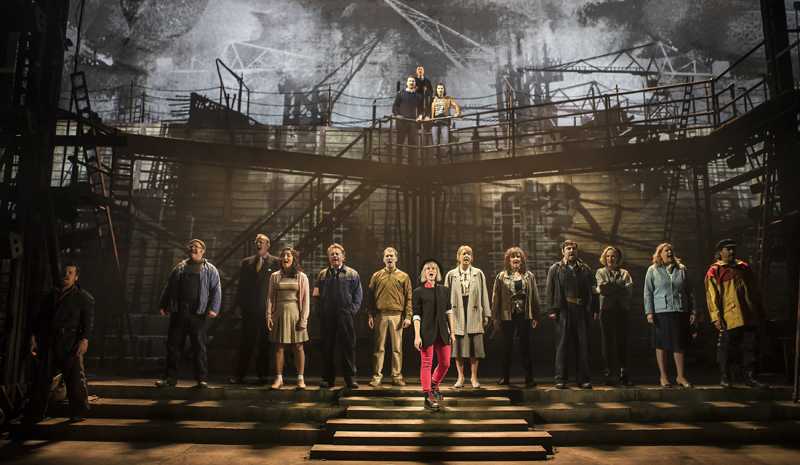d&b Soundscape sails with The Last Ship
- Details

Sound designer Sebastian Frost used d&b Soundscape, a signal processing technology, with two optional software modules: En-Scene a sound object positioning tool, and En-Space which allows designers to add room emulation of reverberation signatures particular to any given space, real or imagined. Frost harnessed this technology to his own vision of how the musical should be perceived and enjoyed by all audience members.
“I went to hear a demo in Hall 14 at d&b’s HQ in Backnang about a year ago,” Frost comments. “The experience was inspirational because the biggest thing you want from any system is that it doesn’t tie you down or restrict you in anyway. Currently there is a great deal of chatter in audio circles about creating immersive experiences or 3D sound environments, that’s not what’s happening here. What I heard was much more than simple panning or delay of sound; you were not just placing sound objects in specific places. This was a more scientific approach - this was the creation of a sound field within which the creative possibilities appear unrestricted.”
Recognising the specific demands of musical theatre, d&b then arranged a more applicable demonstration. “The Everyman Theatre in Cheltenham is a typical multi-level theatre, whereas Hall 14 was a 360° environment you could walk around and through. Exciting as that was, having the opportunity to play around, to see if we could combine Soundscape with a more conventional proscenium style deployed system was ideal. What was immediately apparent was that as I went into the theatre it had the same effect I’d heard in Backnang; that effect is that the sound field is opened-up to the entire audience. In that sense hearing is transformational.”
Beyond his own desire to ‘open the sound field’ to the entire audience, the Last Ship presented Frost with a second strong justification for implementing Soundscape. “When I sat with The Last Ship designers 59 Productions and director Lorne Campbell there was one aspect of Northern Stage that affected everything. The stage is wide and relatively speaking not so high. What they wanted was a clean line to stage so they could use full height and width to accommodate large scale scenic video projection. Typically, they would have used a line array system of some sort at this venue, but that was not a realistic option with the video projection being contemplated.”
As well as installation of multiple loudspeakers throughout the auditorium, the technical parameters of Soundscape requires a horizontal array of discrete sound sources across the top of the stage. While these can be line arrays, it’s also perfectly practical to use point-source loudspeakers, which is where Frost saw the advantage.
As Northern Stage’s production manager Chris Durant observed at the time, “Here we have six d&b V10P across the proscenium, each laid horizontal with the horn rotated to present the 110° wide dispersion. Six Y10P are down the room on the delay line, and there are twelve front fills. The Y-SUBs are all tucked away up on a bridge above the audience. We would normally struggle here with loudspeaker positions with relationship to lighting positions and sightlines, and in this case, we have scenic projection to consider which only makes that harder. But instead nothing intrudes. At most there are the E6 front fills across the stage, but that’s it.”
With direct support from d&b, contracted audio supplier Stage Sound Services took Frost’s design concept, made the ArrayCalc assessment of the auditorium and installed the system with Frost’s production engineer Owen Lewis, assisted by Durant’s house team. “The system went in quickly and easily and sounded good the moment we turned it on,” says Frost.
“Because it sounded good from the off, we were in a good enough place to be able to experiment and play around immediately with the creative elements. Having the freedom to put the band where you want proved highly advantageous, here they were physically positioned off stage left, but for most of the show I have most of the instruments placed around the stage as a whole.”
(Jim Evans)
















